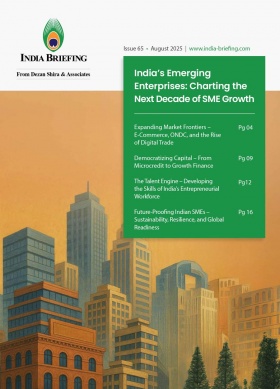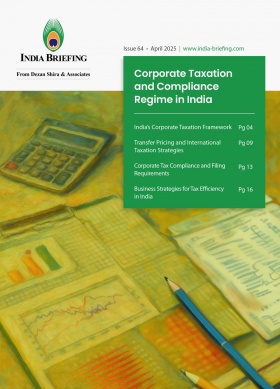Processing Payroll for Expats and Locals in India: Key Differences
Learn how payroll processing for expatriates (expats) differs from locals in India, from tax residency and social security to reporting and compliance.
India’s role as a hub for global talent has expanded rapidly in the past decade. Multinational companies are hiring locally and bringing in expats to manage specialized functions. Though locals and expats fall under the same income tax law, the way their salaries, allowances, and deductions are treated differs a lot.
Employment regulations in India
India overhauled its labor framework in 2019–2020 by consolidating 29 separate laws into four comprehensive labor codes:
- The Code on Wages
- The Industrial Relations Code
- The Social Security Code
- The Occupational Safety, Health, and Working Conditions Code
These reforms aim to simplify compliance and establish a more unified framework for both employers and employees. It is important to note that the new labor codes have not yet been implemented. While the central government and most states have pre-published draft rules, a definitive timeline for full implementation has yet to be announced.
Once enforced, the labor codes will apply to both local and expatriate workers.
However, expatriate employment contracts often go beyond the standard provisions, typically including clauses related to repatriation benefits and cross-border arrangements. Fixed-term contracts are also becoming increasingly common among expatriates, offering greater flexibility to both employers and employees compared to traditional open-ended agreements.
For expatriates, compliance begins the moment they arrive in India. Anyone entering on an employment visa and staying beyond 180 days must register with the Foreigners Regional Registration Office (FRRO) within 14 days of arrival. Local employees are exempt from this step, which adds an additional layer of complexity to expat payroll management.
India’s tax framework for expat staff
Residency and tax liability
Tax treatment depends on whether an individual qualifies as a resident under Indian law. India uses the 182-day rule, i.e., individuals spending 182 days or more in a financial year in India are treated as tax residents and taxed on their global income. For high-income non-resident Indians (earning above INR 1.5 million (US$17,221.1) from Indian sources), the threshold can reduce to 120 days if their total stay in the preceding four years is at least 365 days.
A deemed residency rule also applies to Indian citizens earning more than INR 1.5 million (US$17,221.1) in India but not paying taxes in any other country.
For expats, this classification determines whether their global income or only India-sourced income is taxable. Local ordinarily resident employees, by default, are always treated as residents, and their entire income from employment is taxed in India.
Expat employees working for foreign enterprises may be exempt from expat tax in India if these conditions are met:
- An employee’s stay in India does not exceed 90 days during the relevant year;
- Foreign enterprise is not carrying on any trade or business in India; and
- The compensation paid is not claimed by the employer as a deduction from taxable income in India.
Other taxes
Employers deduct taxes at the source (TDS), but rates and treatment can differ between expats and locals depending on residency status, treaty benefits, and nature of income. Expats often require some coordination with tax professionals to apply the right rates and ensure proper credit under double taxation treaties.
Professional tax is levied at the state level, ranging between INR 200 (US$2.3) and INR 2,500 (US$28.7) annually. Some states exempt foreign nationals, while others apply the same rates as for locals. Employers must check state-specific rules when managing payroll for expats.
Double taxation avoidance agreements (DTAAs)
India has signed over 94 comprehensive DTAAs and 8 limited DTAAs. For expats, these treaties are helpful because they prevent double taxation and can lower withholding tax rates. For example, the India-US DTAA reduces dividend withholding tax from 20 percent to 15 percent (if the beneficiary is a company holding at least 10 percent of the voting stock of the dividend-paying company) and technical services fees from 20 percent to 15 percent or 10 percent (if done for payments for the use of industrial, commercial, or scientific equipment).
Employers processing payroll for foreign nationals must track the applicable treaty, ensure tax residency certificates are collected, and apply the correct withholding.
India’s social security contributions under payroll processing
The provident fund (PF) is mandatory for organizations with 20 or more employees, requiring a 12 percent contribution each from employer and employee. Locals are automatically covered, while expats must contribute unless they are exempt under a social security agreement (SSA). India has signed SSAs with some countries like Belgium, Germany, and France. Expats from these countries can obtain a Certificate of Coverage from their home country to avoid dual contributions.
Employee State Insurance Corporation (ESIC) applies to employees earning up to INR 21,000 (US$241) per month and INR 25,000 (US$286.9) per month for employees with disabilities, with contributions of 0.75 percent from employees and 3.25 percent from employers. Since most expats earn far above this threshold, ESIC generally does not apply to them, whereas it can cover many local employees.
Salary structures in India and benefits
Compensation packages for local employees in India often follow the given format:
- Basic salary forms 40-50 percent of cost-to-company;
- House Rent Allowance (HRA) can be up to 50 percent of basic + dearness allowance in metro cities;
- Leave Travel Allowance (LTA) is usually 10 percent of basic pay per year, and
- Medical allowance can vary between INR 1,250-15,000 (US$14.3-US$171.9) per month.
By contrast, expat packages are much more comprehensive and can cost two to three times the base salary. In Mumbai, expat packages average around US$217,165 annually, placing the city among the world’s highest-paying locations for foreign workers. These packages often include housing allowances, education support for children, relocation benefits, and hardship allowances.
Many expats are paid under split payroll arrangements, where part of the salary is delivered in the home country currency and the rest in Indian rupees. This allows them to meet home-country obligations such as mortgages or insurance, and another part is paid in Indian rupees for local expenses. Some companies adopt currency hedging strategies to protect against fluctuations that could impact both employer costs and employee purchasing power.
Immigration and visa requirements
Payroll for expats is closely tied to immigration rules. Employment visas require a minimum salary threshold of US$25,000 annually, with validity for one year and extension up to five years. Exemptions exist for specific roles such as language teachers, ethnic cooks, and embassy staff.
Once in India, expats must maintain FRRO registration, file annual tax returns, and ensure visa renewals are on time. Instances of non-compliance can disrupt your employment plans and directly impact payroll continuity. Employers, therefore, need a system to monitor visa timelines and coordinate with authorities.
Administrative complexities in expats’ payroll
Compared to locals, expats involve far more documentation. Employers must prepare:
- Form 15CA/15CB for remittances abroad;
- Tax residency certificates to claim DTAA relief;
- Detailed cross-border employment contracts; and
- Immigration compliance reports for Indian authorities.
Beyond this, both expats and locals require standard filings like Form 16, monthly PF returns, half-yearly ESIC returns, and annual tax returns by July 31 but the complexity for expats is much greater because of additional reporting requirements.
[highlight]
Form 15CA is required for remittances to non-residents and serves as a declaration of tax compliance.
Form 15CB is a certificate issued by a chartered accountant (CA), required when taxable remittances exceed INR 500,000 (US$5,738.5) in a financial year.
These apply to salary remittances only if the gross remitted amount is taxable or hasn’t undergone proper TDS deduction. If it is a net salary remitted to one’s own account, already taxed in India, banks usually do not require Forms 15CA or 15CB.
[/highlight]
Practical approaches for employers
Employers and human resources (HR) departments each can ensure smooth arrival and work experience for expats in India.
For Employers, these measures can help reduce risk:
- Establish clear policies distinguishing expat and local employee treatment;
- Implement tracking systems for days present in India (for 182-day rule compliance);
- Engage local experts for complex tax and immigration matters;
- Consider split payroll structures for senior expat positions; and
- Maintain detailed documents for all cross-border employment aspects.
HR departments can ensure smooth onboarding and work experience in the following ways:
- Monitor visa expiry dates and renewal requirements closely;
- Coordinate with FRRO for timely registration and updates; and
- Track DTAA eligibility and ensure proper certificate collection.
Summary
The payroll structure for locals and expats in India is a balance between uniform tax rules and special provisions for foreign employees. Local residents are subject to standard deductions and PF rules, whereas expats face variations in allowances and social security contributions. Employers that pay attention to these nuances while designing their payroll systems not only ensure compliance but also create a smoother experience for employees.
(US$1 = INR 87.2)
About Us
India Briefing is one of five regional publications under the Asia Briefing brand. It is supported by Dezan Shira & Associates, a pan-Asia, multi-disciplinary professional services firm that assists foreign investors throughout Asia, including through offices in Delhi, Mumbai, and Bengaluru in India. Dezan Shira & Associates also maintains offices or has alliance partners assisting foreign investors in China, Hong Kong SAR, Vietnam, Indonesia, Singapore, Malaysia, Mongolia, Dubai (UAE), Japan, South Korea, Nepal, The Philippines, Sri Lanka, Thailand, Italy, Germany, Bangladesh, Australia, United States, and United Kingdom and Ireland.
For a complimentary subscription to India Briefing’s content products, please click here. For support with establishing a business in India or for assistance in analyzing and entering markets, please contact the firm at india@dezshira.com or visit our website at www.dezshira.com.
- Previous Article India’s Semiconductor Sector: Tracking Government Support and Investment Trends
- Next Article Indian Exporters Face 50% US Tariff Rate Effective August 27, 2025








